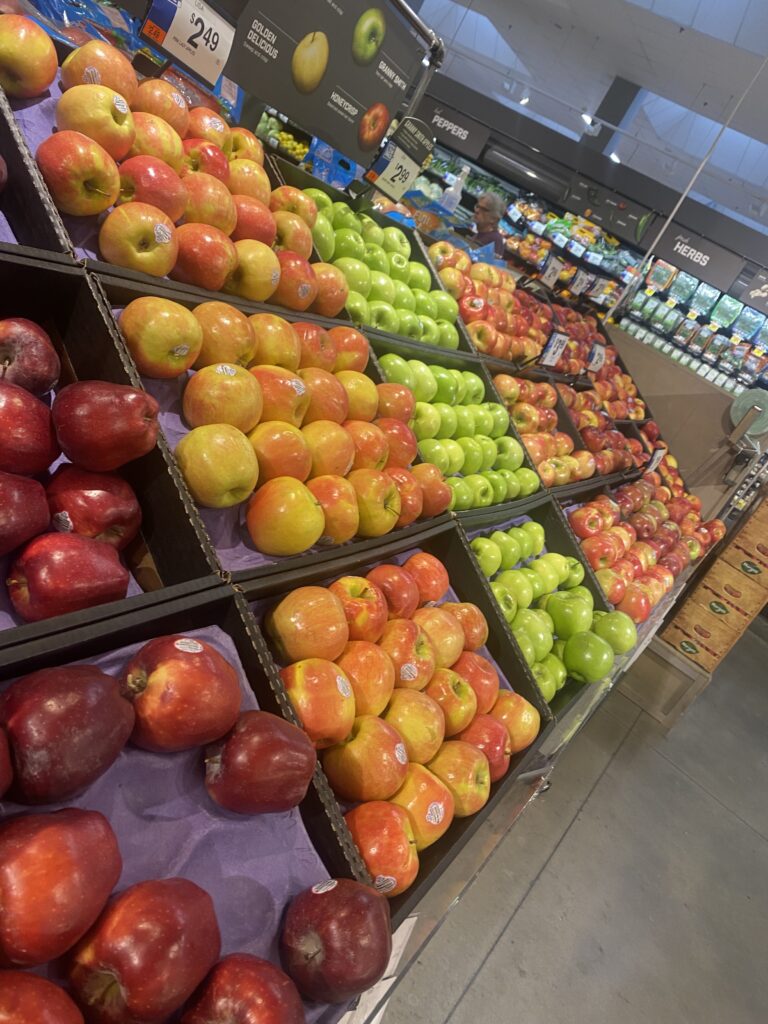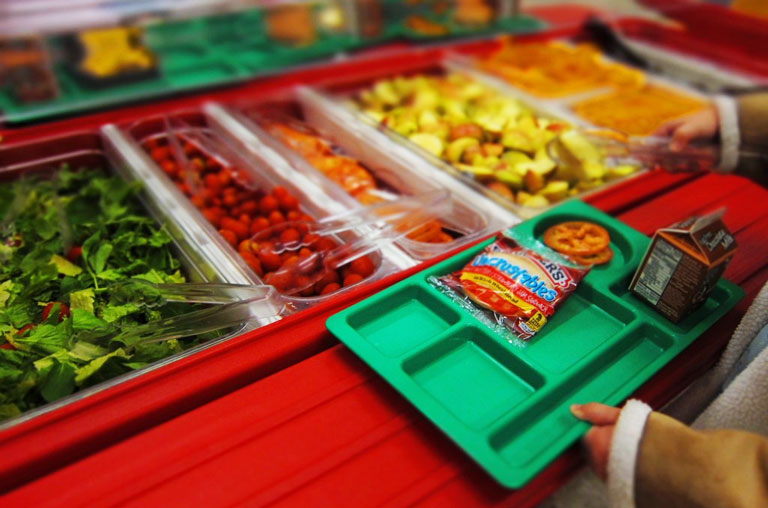On Friday, October 31, people were lining up with shopping bags in-hand. But they weren’t seeking Halloween candy.
The prospect of filling their bags with fresh produce for free had drawn them to 1460 Good Hope Road, SE, where there were tables of various fruits and vegetables set up in the parking lot of Bread For the City.
In addition to providing vulnerable residents with legal and social services, clothing and medical care – Bread for the City hosts farmers markets twice a month with fresh foods from local suppliers.
Volunteers help hand out produce to clients, who fill their bags free of charge. The nonprofit’s food program received October’s food donations from Capital Area Food Bank. Additional donors include Eastern Market and Whole Foods, among others.
The markets are a part of Bread for the City’s gleaning program, Glean for the City. Gleaning simply means gathering leftover grain or produce after a harvest.
The program collects roughly 48,000 pounds of fresh food per year, which helps feed an estimated 9,000 clients per month, according to Keith Lemons, gleaning coordinator and food department associate for the nonprofit.
Although Bread for the City has been in existence for almost forty years, the free farmers market has been running for only seven. Lemons explained that the market started because Bread for the City recognized that there were clients in need of help not just with getting enough food, but with maintaining a healthy diet. The market strives to address both needs and it is safe to say the beneficiaries are very grateful.
Leonard Edwards is one of them. More than a decade ago, when he first arrived at Bread for the City, which he calls “Bread,” he was in a rough place. He was in serious need of food and support in rebuilding his body and life.
“Two years before I came here, I lost my good job of fifteen years. After that, I couldn’t find good work. Then Bread allowed me to get back on my feet and get into better dietary habits because my diet had gotten worse over that time,” Edwards said.
When Edwards learned he had high blood pressure, he sought out advice from doctors and other healthcare professionals at Bread. They coached him on ways to prepare his meals that helped him improve his health. He said his children also also grew up stronger and better-nourished thanks to Bread.
The food that is provided by Glean for the City is gathered from a variety of sources. Some of it is picked up from farmers markets, and some of it is gleaned after crops are harvested on farms in Maryland. Some of it is raised by Bread for the City.
In order to be able to provide more fresh produce, the organization began planting its own 2.75 acre organic orchard in spring 2012 in Beltsville, Md. All crops harvested at the orchard end up at the food pantry at Bread for the City and are offered to clients. In addition, the nonprofit has a rooftop garden used to help educate visitors about growing fruits and vegetables.
Although the markets are giving out food for free, Edwards doesn’t think it is right to take such things for granted. He now serves as Bread for the City’s time-banking coordinator. He helps clients earn credits for educational services in exchange for volunteer hours and stresses lessons of self-sufficiency. He suspects that someday, we may live in a world where “handouts” are no more. So he has taken on the task of “helping Bread help themselves.”
He has faced challenges along the way, he admits. Some of the clients have experienced hardships that have left them without much self-confidence.
“The problem is making them believe they can do it. Some of these people don’t even believe they can do it. That’s another big battle- just making them believe it, that they can help themselves, but I’m willing to fight it,” said Edwards.








